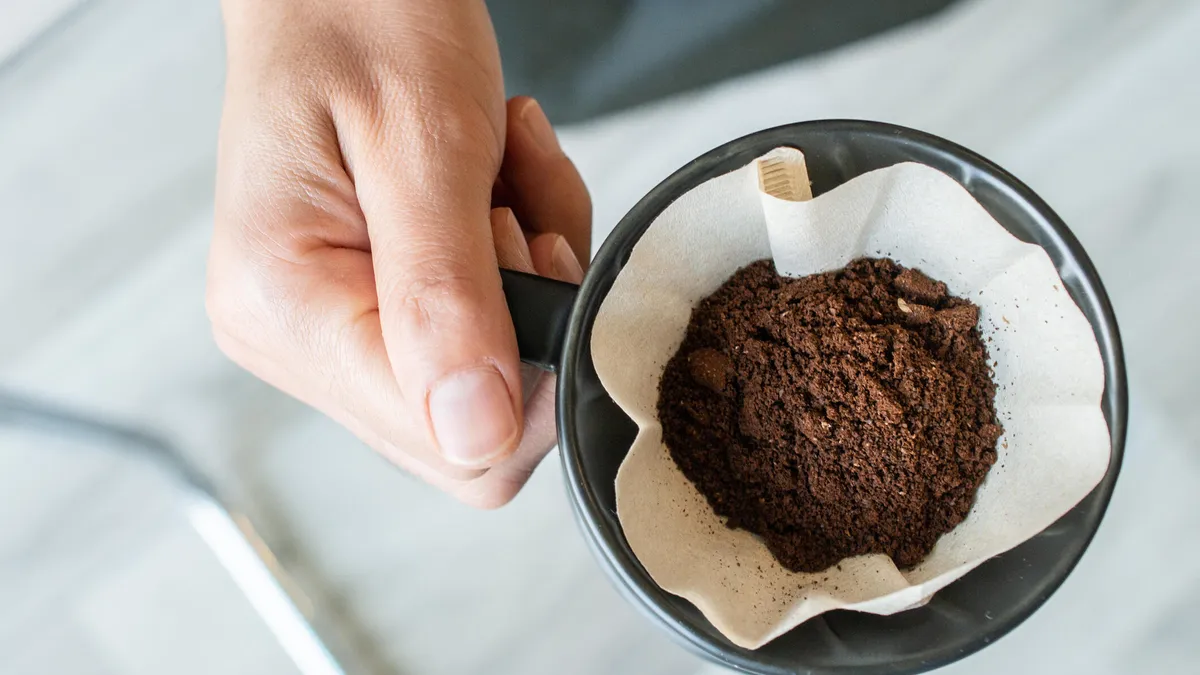
For some, brewing morning coffee is a task to be ticked off the list, while others consider it a sacred ritual. No matter where you fall on the spectrum, finding the perfect balance of coffee and water can significantly improve the resulting coffee.
If you’re team K-Cup, you can skip ahead — those pod machines are designed specifically for consistency, which is their main selling point. Espresso enthusiasts face their own unique challenges that deserve separate coverage. But for everyone else brewing with drip machines, French presses, pour-over setups or other manual methods, the perils of inconsistent coffee are real.
The truth is, seemingly minor variables in your brewing process can dramatically impact your final cup. Water temperature fluctuations, slight changes in grind size, timing variations, and even environmental factors like humidity can transform your reliable morning ritual into a gamble.
Several factors influence the flavor of your coffee, but perhaps none so much as the ratio of water to grounds. Being fussy about what you put into your coffee-making device, both in terms of quality and precise measurement, significantly impacts the result.
Don’t miss any of our unbiased tech content and lab-based reviews. Add CNET as a preferred Google source on Chrome.
The perfect coffee for you might not be the same for someone else, but armed with information, you can better experiment to achieve a consistent cup that best suits your unique taste. For a deeper understanding of the “Golden Ratio,” the variables that influence it, and other best practices from an expert, I spoke to Kaleena Teoh, co-founder and director of education for Coffee Project New York, for her insight.
What is the Golden Ratio?
The so-called “Golden Ratio” refers to the ideal proportions of water and ground coffee at the beginning of the brewing process, resulting in a full-flavored, balanced cup.
“The Specialty Coffee Association, an international organization that pretty much governs the guidelines that we use, suggests between a 15 to 1 to 20 to 1 ratio,” according to Teoh. “It literally refers to the amount of water versus the amount of coffee grounds,” she says, “and then the resulting volume at the end might vary entirely depending on what kind of system it is,” whether automatic drip, French press, or pour-over.
The Golden Ratio is based on weight, not volume
It’s worth noting that this ratio is based on weight, not volume. While coffee scoops may be calibrated for a particular grind size for a specific type of machine, the ratio’s effectiveness relies on a more precise measurement. A tablespoon potentially holds a different weight of coffee, whether you’re talking about fine espresso powder, conventional preground coffee or coarse cold brew grounds.
The goal of this precise ratio is flavor, with the appropriate strength to taste the actual coffee without elevated acidity, which reveals under-extraction, or astringency, which reveals over-extraction, and that can support additions like milk or sugar.
“Personally, I do a 16 to 1 ratio,” says Teoh, “which is frequently touted as the ideal within the 15 to 20 range. I think it’s nice, not too strong, and a good place to start.” That ratio would ensure you taste the coffee even if you add stuff.
The higher the number in the ratio, which represents water, the gentler (or weaker) the resulting brew. So, if you take your coffee black, you may consider a slightly different ratio, like 17 or 18 to one. You might try a 15-to-1 ratio for a stronger coffee if you drink it light and sweet.
Other factors influence how effective the ratio is
The ratio alone isn’t enough to ensure an optimal cup. The following elements also play a significant role in the outcome of brewed coffee.
Grind size
The size of the grind plays a vital role in how coffee is extracted. Conventional, pre-ground coffee typically has a “medium” grind tailored for most drip coffee machines, but that isn’t always appropriate across all methods. According to Teoh, a French press typically requires a coarser grind, “like sea salt,” whereas pour-over can benefit from a slightly finer grind than what you can find on supermarket shelves.
Temperature
Temperature also impacts how coffee is extracted. “The moment the water hits coffee, it will start extracting,” says Teoh, “whether it’s cold or hot.”
Cold brew is its own magical thing, of course, but when it comes to hot coffee, there’s an ideal temperature range, and — news flash — it isn’t boiling. “Anywhere between 195 to 205 Fahrenheit is what the SCA suggests,” says Teoh, which allows for a temp where the extraction happens in such a way as to maximize certain flavor compounds in the coffee, while still maintaining an appropriate temperature to drink.
Agitation
Agitation refers to the movement of the grounds during extraction. “The more agitation you give it when coffee is being extracted, the more concentration occurs during brewing,” explains Teoh. Agitation is limited in standard machines for brewed coffee but plays a role in French press and pour-over methods.
Suppose you’ve experimented with various drip coffee machines and coffee grounds and have always been a little underwhelmed with the results for your personal liking. In that case, it may be time to consider getting nerdy with something like pour-over, which can be fussy, but can help with this aspect of the brewing process.
Filter
The filter you use is the final barrier between what’s happening during the extraction process and what arrives in your cup. “Different filters have different pore sizes, allowing certain elements to pass through or not,” explains Teoh. “Metal filters will allow for all solubles and some insolubles,” she says, “while a paper filter will be able to hold back all of those insolubles, giving you a very clean cup.” Insolubles may refer to minute granules of ground coffee and natural oils present in coffee.
One is not necessarily better than the other; it is a matter of preference. Oil can give coffee additional body, but it isn’t necessarily always desirable for everyone, either visually or texturally.
Best practices from a coffee expert
To achieve the most out of the golden ratio, Teoh suggests practices that can make a noticeable difference in your daily brew.
Measurement
The Golden Ratio relies on weight, so a scale is recommended to achieve that ideal 16-to-1 water balance to coffee grounds. “Everything is being weighed in most coffee shops to ensure that there’s some sort of consistency,” says Teoh, from the grounds to the water and even, in the case of espresso, the resulting brew. If you’re serious about upping your coffee game, a scale is a pertinent investment, and it doesn’t have to be an expensive one.
Barring that, “any unit of measurement that makes sense to the brewer, to have some sort of consistency through the brew day to day is better than nothing,” says Teoh, bad news for the “eyeball it” method, but good for those where a kitchen scale is just one gadget too many. However, if you’re committed to measuring by volume, whether with a tablespoon or coffee scoop, she advises experimentation and precision to determine the best outcome for you.
Coffee quality
Naturally, a better cup of coffee also starts with better coffee, no matter the measurement system. “Fresh beans will always taste better,” says Teoh. Go to a local roaster and get freshly roasted coffee.” Look at tasting notes, speak to the roastery staff, and taste different blends to determine if you like something bright and acidic, as with a light roast coffee, or more floral and fruity notes, as with a darker roast.
Grinder
More so than the scale, and even more so than the coffee maker itself, Teoh advises one device that can really affect the quality of your coffee. “The best investment is actually the grinder,” she says. “Get a coffee machine that can do its job. It doesn’t have to be the most expensive one. But a burr grinder is actually an excellent investment,” she says. Ideally, as with a cheaper model, you want a grinder with settings that take the guesswork out of determining how fine the grind is.
“If you’ve just been buying pre-ground coffee, and you moved on to grinding it fresh, you will see quite a big difference in the cup,” says Teoh.
Consistency
Finally, the most crucial factor combined with all of the above is consistency, and not committing yourself to products or processes that you can’t follow through with regularly. “Just use a method that is convenient to you, and that you’re able to use every day, because if it’s too much and too complicated, you’ll end up stopping,” says Teoh.
“Pick something that you’re comfortable with and can do consistently,” whether with a particular ratio, particular beans, or particular devices. “And then play with it,” she says. “Experiment with it until you find something that you like.”



